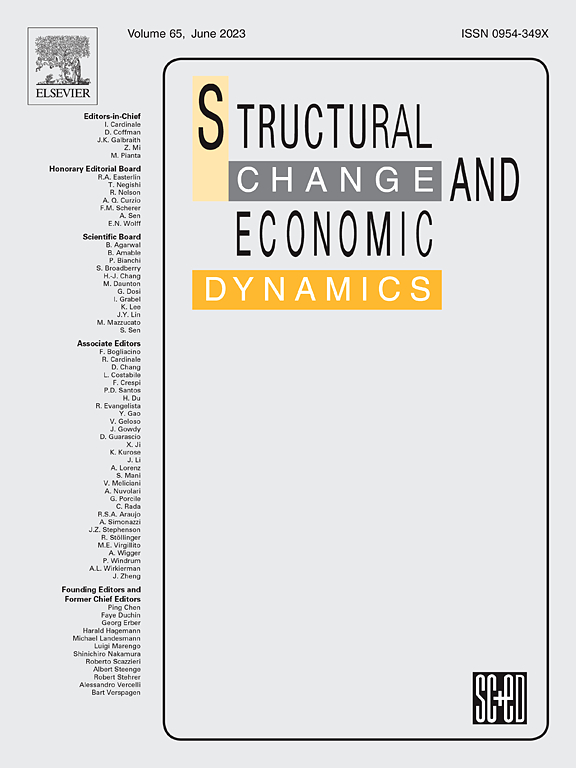Transcending the geographical stickiness of complex economic activities via strategic unrelated diversification
IF 5
2区 经济学
Q1 ECONOMICS
引用次数: 0
Abstract
Developing economies often face challenges in catching up and leapfrogging due to the drawbacks of industrial restructuring. This study identifies the geographical stickiness of high-complexity industries and proposes an optimal industrial diversification strategy using a thorough examination of industry entry and maintenance at the global level. The findings indicate that the mechanisms driving the geographical stickiness of complex industries are linked to their reliance on a larger number of related complex industries, as explained by the “capabilities approach”. Moreover, we encourage developing countries to strategically diversify into a small group of related and inter-dependent high-complexity industries simultaneously, a process called “strategic unrelated diversification”, thereby increasing the probability of industrial transformation. These findings have significant implications for explaining why certain countries struggle with industrial restructuring and how to facilitate industrial upgrading effectively.
求助全文
约1分钟内获得全文
求助全文
来源期刊

Structural Change and Economic Dynamics
ECONOMICS-
CiteScore
9.60
自引率
4.90%
发文量
159
期刊介绍:
Structural Change and Economic Dynamics publishes articles about theoretical, applied and methodological aspects of structural change in economic systems. The journal publishes work analysing dynamics and structural breaks in economic, technological, behavioural and institutional patterns.
 求助内容:
求助内容: 应助结果提醒方式:
应助结果提醒方式:


